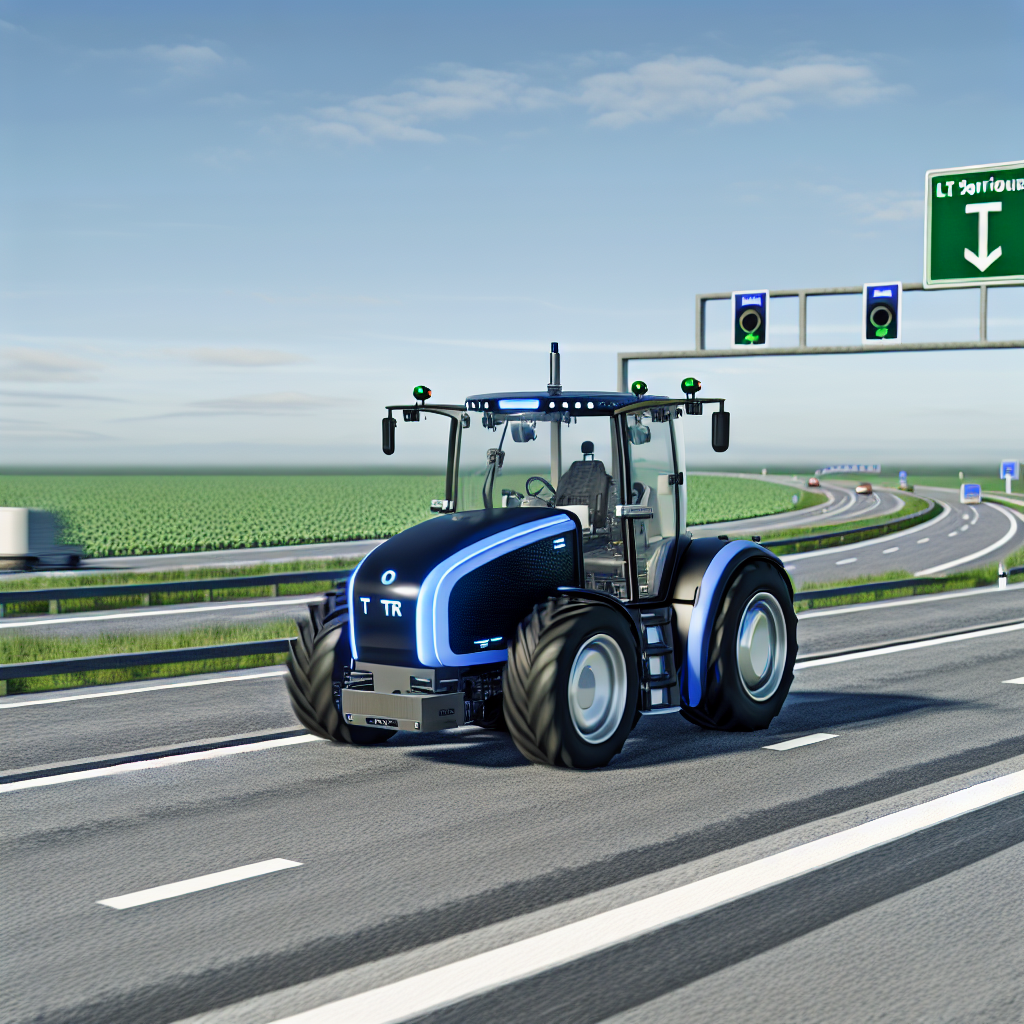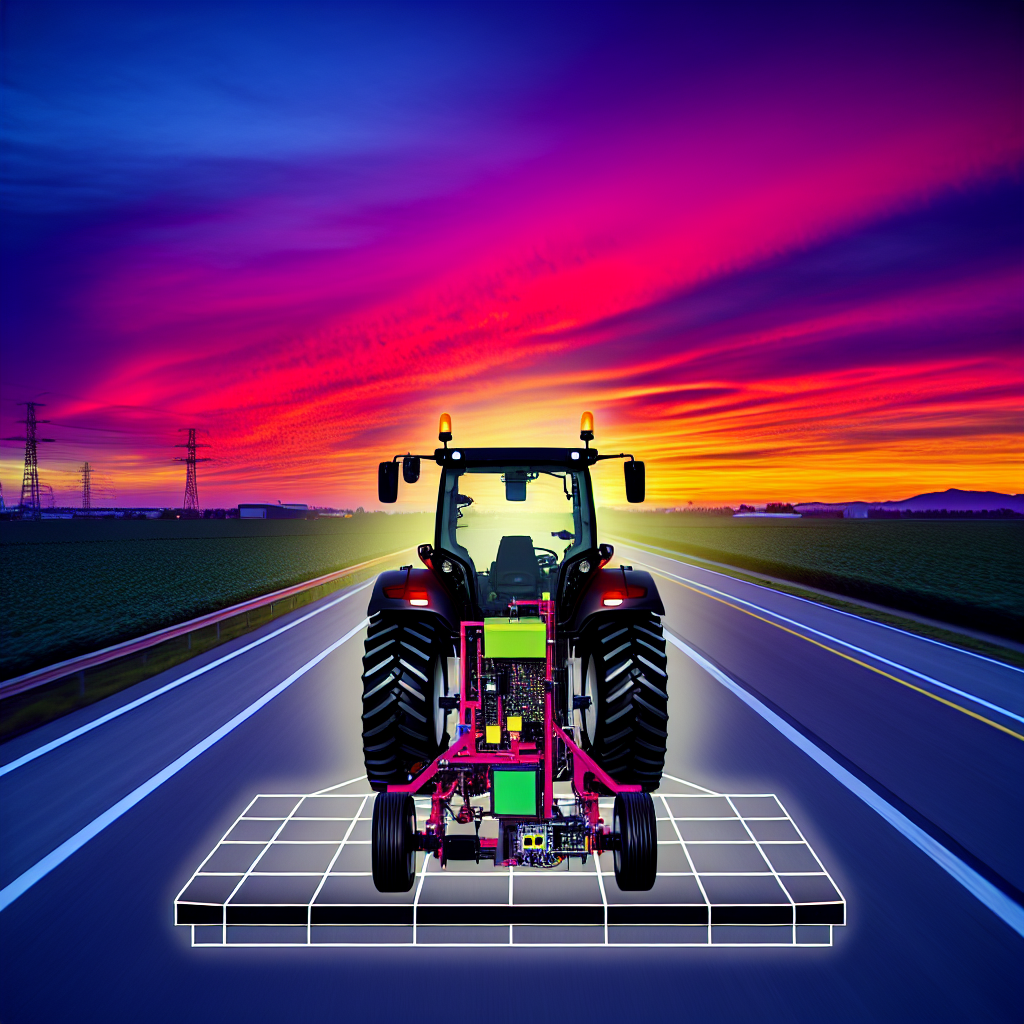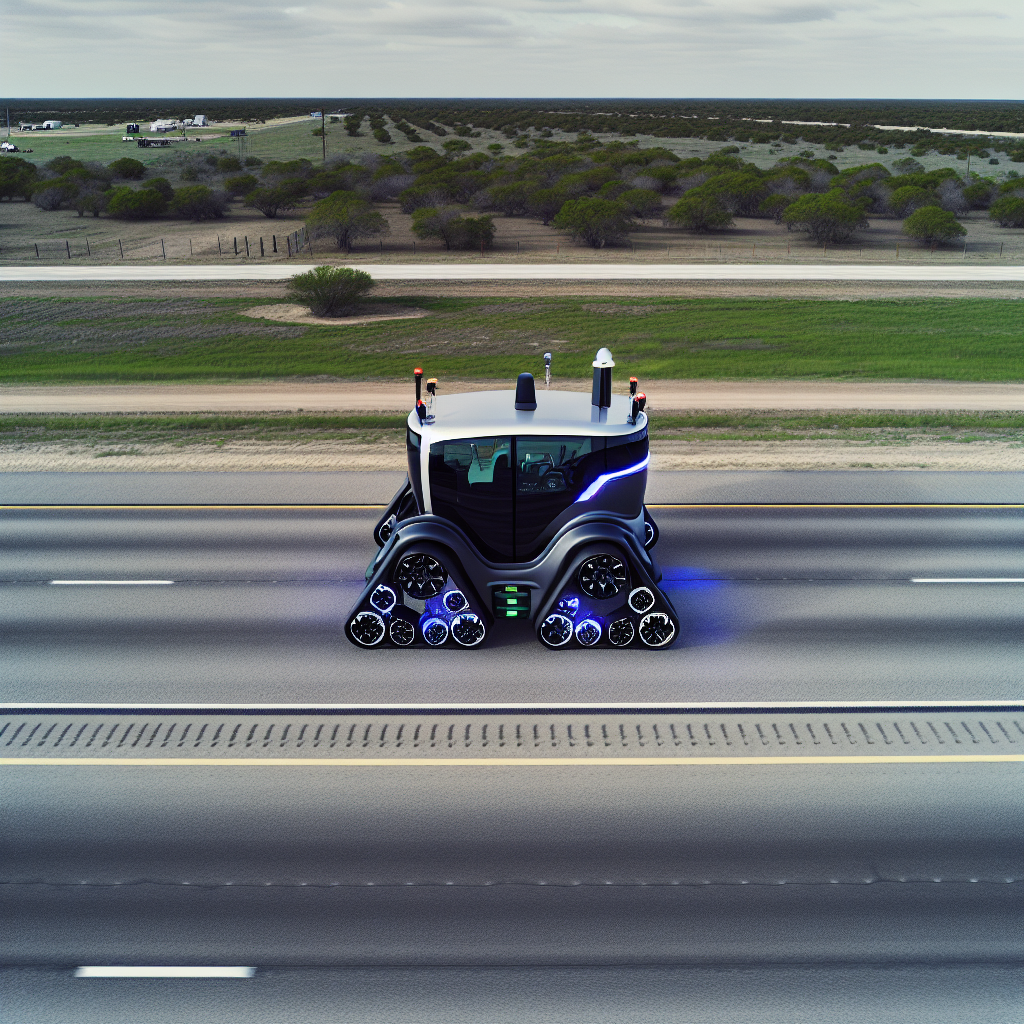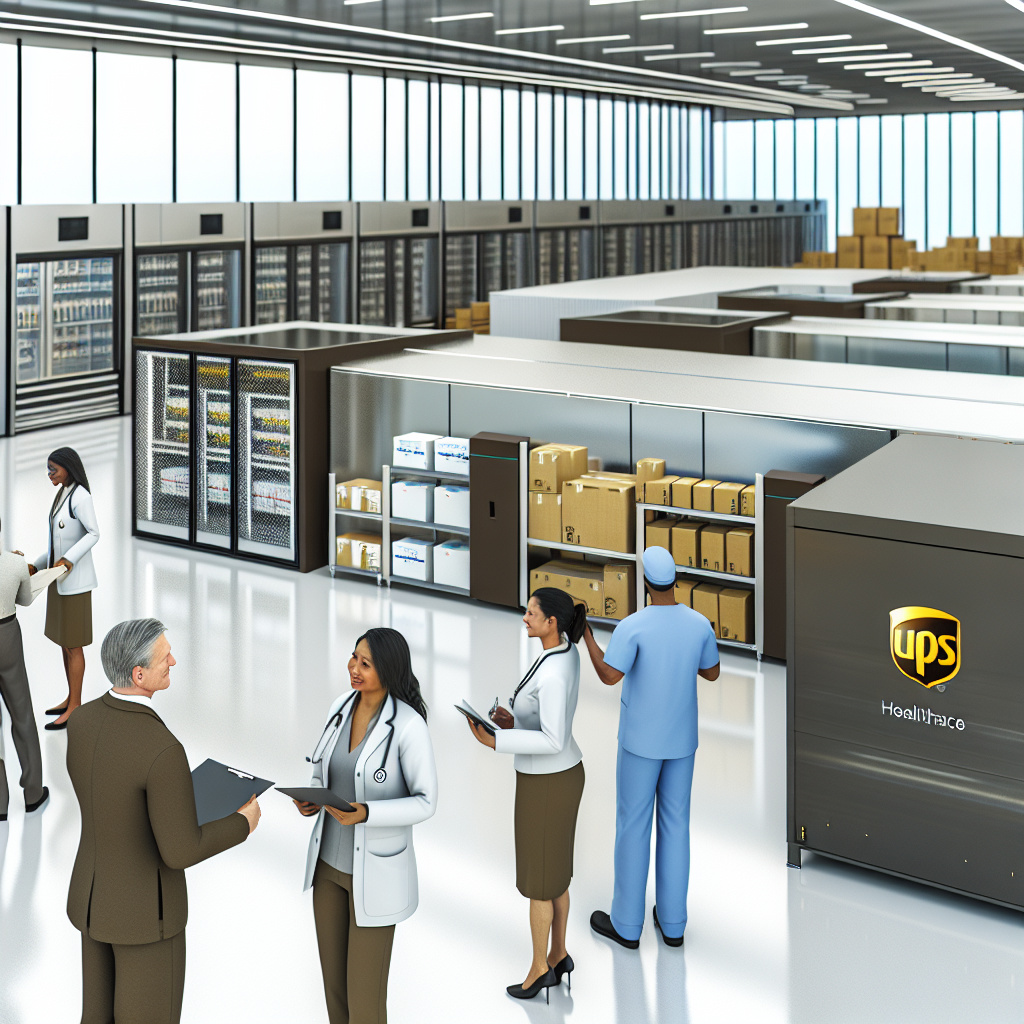Outline for Blog Post on International and PlusAI Autonomous Truck Pilot Program
I. Introduction
- A. Overview of the pilot program
- B. Importance of autonomous vehicles in the trucking industry
- C. Mention of key players: International and PlusAI
II. Significance of the Pilot Program
- A. Objectives of the program
- B. Expected outcomes for the trucking industry
- C. The role of customer collaboration in the program
III. Technology Involved
- A. Features of the autonomous LT Series tractor
- Updated sensor suite
- S13 Integrated powertrain
- AI-based SuperDrive
- B. Infrastructure requirements and the role of the San Antonio hub
- C. Innovations in autonomous driving
IV. Potential Impact on the Trucking Industry
- A. Safety improvements
- B. Efficiency gains
- C. Economic implications and bottom-line benefits
- D. Future of autonomous trucking beyond the pilot program
V. Conclusion
- A. Recap of program’s significance
- B. Call to action for industry stakeholders to engage with autonomous technologies
- C. Future outlook for international and PlusAI in autonomous trucking
In a groundbreaking step for the future of transportation, International and PlusAI have embarked on a pioneering autonomous truck pilot program that promises to reshape the logistics landscape. This innovative collaboration features the second-generation autonomous LT Series tractor, set to navigate the bustling Interstate-35 corridor in Texas, connecting key cities like Laredo and Dallas.
By integrating advanced AI technology and an updated sensor suite, this pilot not only seeks to demonstrate the operational viability of autonomous vehicles but also aims to enhance safety, efficiency, and customer service within the trucking industry. As the sector edges closer to a more automated future, this initiative exemplifies the commitment of industry leaders International and PlusAI to embrace cutting-edge solutions, ensuring a robust evolution in freight transport that stands to benefit all stakeholders involved.
Technology Behind the Autonomous LT Series Tractor
The autonomous LT Series tractor exemplifies cutting-edge technology in heavy-duty trucking, showcasing advancements in both its sensor suite and the S13 Integrated Powertrain.
Updated Sensor Suite
Although specific details about the sensor suite have yet to be publicly disclosed, this enhanced technology is crucial for the tractor’s autonomous operations. The sensor suite typically includes a combination of lidar, radar, cameras, and ultrasonic sensors, providing a comprehensive perception capability. This suite helps the tractor to:
- Navigate complex environments effectively, including highway conditions and urban settings.
- Detect and interpret surrounding objects, such as other vehicles, pedestrians, and obstacles, improving safety.
- Facilitate reliable data processing for decision-making algorithms essential for autonomous driving.
S13 Integrated Powertrain
Complementing the sensor suite is the S13 Integrated Powertrain, which significantly enhances the performance and efficiency of the LT Series tractor:
- Engine Characteristics: The engine operates at lower revolutions, delivering high torque, up to 515 horsepower, and 1,850 lb-ft of torque. This design maximizes fuel efficiency by optimizing combustion processes, lowering emissions, and ensuring effective power delivery during operation. (Navistar News)
- Automated Transmission: The S13 features a 14-speed automated manual transmission with electronic clutch automation for smooth gear transitions, improving handling and driver comfort. With its two crawler gears, the transmission enhances startability under heavy loads.
- Aftertreatment Advancements: The integrated aftertreatment system, designed to minimize space, uses a dual-stage SCR catalyst system, eliminating the EGR cooler and actively managing emissions. This leads to longer maintenance intervals and lower operating costs.
Integration of Technologies
The combination of the updated sensor suite and the S13 Integrated Powertrain ensures that the autonomous LT Series tractor is not only reliable and efficient but also represents a significant step toward safer autonomous operations in the trucking industry. Together, these technologies support real-time diagnostics and enable predictive maintenance through the OnCommand® Connection platform, ensuring the vehicle remains in peak operational condition. (International Trucks)
As the sector continues to evolve, the integration of these sophisticated technologies in the autonomous LT Series tractor marks an exciting development in the future of trucking, bringing us closer to fully autonomous fleets that prioritize safety, efficiency, and operational excellence.
Summary of Pilot Program Goals
The pilot program by International, in collaboration with PlusAI, aims to achieve key objectives demonstrating practical applications of autonomous vehicle technology in logistics. Based along the busy Interstate-35 corridor in Texas, between Laredo and Dallas, the program addresses commercial trucking’s specific needs.
Key Goals
- Operational Viability: A primary aim is to demonstrate the commercial viability of autonomous technologies in real-world conditions. Partnering with select fleet operators allows the initiative to collect operational data showcasing the autonomous LT Series tractor’s performance under diverse conditions, validating its reliability and efficiency.
- Customer Collaboration: Customer feedback is crucial, enabling International and PlusAI to refine their offerings. Collaborating closely with fleet operators helps enhance autonomous systems and solutions that boost safety and efficiency in day-to-day operations.
- Enhanced Safety and Efficiency: An essential goal is marked improvement in safety and operational efficiency. Advanced features of the autonomous LT Series tractor, including its updated sensor suite and AI-based SuperDrive, aim to reduce human error while navigating complex driving environments.
- Innovation in Logistics: This partnership endeavors to set new benchmarks in trucking. Integrating state-of-the-art technology strives to inspire broader adoption of autonomous vehicles in logistics, shaping the future of freight transport and contributing to a more streamlined, reliable industry.
Conclusion
In short, the International and PlusAI pilot program is a strategic effort aimed at testing robotic trucking capabilities while paving the way for broad integration of such technologies in the industry. The focus on collaboration with fleet operators aligns with creating exceptional customer experiences and delivering innovative solutions to ongoing trucking challenges. This program signals a significant shift towards automated logistics, benefiting all stakeholders involved.
Benefits for Fleet Operators
The autonomous LT Series tractor offers a range of benefits tailored specifically for fleet operators looking to harness the power of autonomous technology in their operations. These advantages include significant improvements in safety, efficiency, and cost management, which are critical for successfully navigating today’s competitive trucking environment.
Enhanced Safety
One of the most compelling benefits of adopting the autonomous LT Series tractor is the heightened safety it brings to fleet operations. The tractor is equipped with an advanced sensor suite that includes lidar, radar, and cameras that enable it to:
- Accurately detect and respond to real-time road conditions and nearby vehicles, thus minimizing the risk of accidents.
- Monitor blind spots and maintain safe distances, reducing potential collisions caused by human error.
- Utilize AI-based decision-making algorithms to enhance reaction times, significantly improving overall vehicular safety.
Improved Efficiency
Efficiency improvements are another key benefit for fleet operators. The autonomous LT Series tractor is designed to optimize fuel consumption and route management, leading to:
- Reduced Idle Time: The tractor’s ability to calculate the best routes in real-time allows for reduced idle time and more efficient driving patterns.
- Increased Utilization: Autonomous operations can facilitate higher vehicle utilization rates, as these tractors can operate longer hours without the constraints of human fatigue.
- Enhanced Maintenance: With predictive maintenance capabilities powered by real-time diagnostics, operators can anticipate service needs and reduce unplanned downtime, ensuring their fleets remain mission-ready.
Cost Implications
When considering the financial aspect, the transition to autonomous LT Series tractors can lead to substantial cost savings for fleet operators:
- Labor Costs: By automating freight transportation, fleets can reduce reliance on driver labor, addressing the ongoing shortage of qualified drivers and associated costs.
- Insurance Premiums: Safer vehicles lead to lower insurance premiums, as fewer accidents can result in reduced claims and enhanced risk profiles for fleets.
- Fuel Savings: Optimized driving patterns not only improve efficiency but also translate into significant fuel savings, further enhancing the profit margins for fleet operators.
Conclusion
In conclusion, the integration of the autonomous LT Series tractor presents a transformative opportunity for fleet operators. The improvements in safety, efficiency, and cost-effectiveness not only streamline operations but also position fleets to thrive in a rapidly changing logistics landscape. By embracing this technology, fleet operators can achieve a competitive edge while contributing to a future of safer and more reliable freight transportation.
Geographical Significance of the Pilot Program
The geographical significance of the pilot program launched by International and PlusAI is profound, particularly along the Interstate-35 (I-35) corridor. This critical freight artery stretches over 1,500 miles from Laredo, Texas, at the Mexico border, to Duluth, Minnesota, and serves as a major conduit for domestic and international trade, especially between the U.S., Mexico, and Canada.
Strategic Importance of the I-35 Corridor
The I-35 corridor is integral to the U.S. economy, with Texas’s contribution accounting for $1.2 trillion or nearly 49% of the state’s GDP. The trade facilitated by I-35 supports an extensive supply chain worth over $300 billion, sustaining around 1.6 million jobs across more than 52,000 establishments in sectors including manufacturing, transportation, and warehousing. This infrastructure is paramount for freight logistics and impacts the operational landscape for trucking companies significantly.
Daily Truck Traffic and Freight Volumes
On any given day, segments of the I-35 corridor experience heavy truck traffic, with certain areas handling over 10,000 trucks daily. This high volume underscores the corridor’s essential role in accommodating both domestic and cross-border trade. In particular, Laredo is recognized as the largest inland international port, processing upwards of 17,000 trucks daily through its international bridges, mostly traveling north to various U.S. destinations.
Economic Impact and Logistics Hub
The Dallas-Fort Worth (DFW) region, located along I-35, serves as a premier logistics hub. Its strategic position allows fleets to efficiently transport goods over long distances, reducing transit times while maintaining cost-effectiveness. The availability of numerous truck stops, maintenance facilities, and rest areas along I-35 enhances the operational efficiency of long-haul trucking.
Infrastructure Challenges and Improvements
Despite its significance, the I-35 corridor faces challenges related to congestion. Sections, such as the one through Waco, are among the slowest freight routes nationwide, affecting timely freight movement and contributing to broader supply chain issues. However, significant initiatives are underway, with numerous highway projects completed and more in progress, totaling billions of dollars in investments aimed at enhancing capacity and improving traffic flow along the corridor.
In conclusion, the pilot program’s location along the I-35 corridor demonstrates its alignment with one of the most vital trading routes in the United States. The advancements in autonomous trucking technologies showcased through this program not only aim to improve efficiency and safety but also directly address the ongoing logistical challenges posed by one of the busiest corridors in the nation.
Comparison of Autonomous LT Series Tractor and Traditional Trucks
| Feature | Autonomous LT Series Tractor | Traditional Trucks |
|---|---|---|
| Driving Mechanism | Fully autonomous with AI-based driving algorithms | Manual or semi-autonomous driving |
| Sensor Technology | Advanced sensor suite including lidar, radar, and cameras | Basic sensors, primarily for driver assistance |
| Operational Hours | Operates continuously without fatigue | Limited by driver hours and rest requirements |
| Safety Features | Enhanced safety protocols with real-time data response | Standard safety features, dependent on driver vigilance |
| Route Optimization | AI-driven route management for efficiency | Route planning relies on driver experience |
| Maintenance | Predictive maintenance with real-time diagnostics | Scheduled maintenance, often reactive |
| Fuel Efficiency | Optimized for fuel efficiency through advanced technology | Varies widely based on driver habits |
| Cost Implications | Potentially lower labor and insurance costs due to automation | Higher operational costs with reliance on drivers |
| Adaptability | Designed for complex and dynamic environments | Primarily designed for fixed routes and conditions |
This table highlights the significant differences and advantages of the autonomous LT Series tractor in comparison to traditional trucks, emphasizing advancements in technology and operational capabilities.

Stakeholder Quotes on the Pilot Program
Tobias Glitterstam, the Chief Strategy and Transformation Officer at International Motors, expressed his enthusiasm for the pilot program’s potential impact on the logistics sector. He stated,
“This pilot program is a big step toward seamless digital operations that are designed to deliver an exceptional customer experience. By working hand-in-hand with our customers, we are proving the commercial viability of autonomous technologies and providing innovative solutions that improve safety, efficiency, and the bottom line.” PlusAI
Additionally, Glitterstam emphasized the strategic significance of the collaboration with PlusAI, remarking,
“This partnership with Plus allows us to leverage the technical strides they have made as we work together to focus on the commercial viability of Level 4 autonomous driving.” International
These insights showcase International Motors’ commitment to advancing autonomous technologies in trucking, focusing on innovative solutions that enhance safety and efficiency while ensuring an exceptional customer experience.
Conclusion
As we look toward the future of autonomous trucking, the pilot program initiated by International and PlusAI stands as a testament to the transformative potential of this technology. Autonomous vehicles promise to redefine logistics through enhanced safety, efficiency, and operational excellence. With the successful testing of the autonomous LT Series tractor along the crucial I-35 corridor, we can expect a ripple effect across the industry that fosters innovation and advances the role of automation in freight transport.
The anticipated impact on the industry extends beyond mere operational improvements. By integrating autonomous technology, trucking companies can address critical challenges such as driver shortages, reduced operational costs, and increased environmental sustainability through improved fuel efficiency. As these technologies evolve, the logistics landscape will transform, offering new opportunities for businesses willing to adapt.
As we embrace this shift towards more automated freight solutions, it is essential for stakeholders to stay informed and engaged. Industry players must collaborate and invest in autonomous technologies to ensure they are well-positioned to thrive in this changing landscape.
In light of these developments, I encourage readers and industry professionals alike to keep abreast of advancements in autonomous trucking. Stay informed by following relevant news, participating in discussions, and advocating for the adoption of innovative solutions that can enhance the logistics sector for future generations.
The journey to a fully autonomous future in trucking is just beginning, and being part of this evolution will determine the leaders of tomorrow’s logistics industry.
Enhanced Keywords for SEO Improvement
To improve the visibility of the article on search engines, several related keywords have been integrated:
- Self-Driving Trucks: Highlighting the technological advancements in fully autonomous vehicles.
- Smart Logistics Solutions: Reflecting on the intelligent systems evolving in logistics technology.
- Autonomous Freight Delivery: Emphasizing the application of autonomous technologies specifically in freight transport.
- AI Logistics Technology: Showcasing the role of artificial intelligence in enhancing logistics processes.
- Freight Transportation Automation: Addressing the broader theme of automation within freight transportation.
- Logistics Innovation: Capturing the ongoing innovation in logistics fueled by automated technologies.
- Supply Chain Automation: Identifying the automation trends shaping supply chain efficiency.
- Commercial Trucking Technology: Discussing technologies driving efficiencies in commercial trucking.
- Autonomous Delivery Systems: Focusing on systems designed for autonomous deliveries in logistics.
- Transportation Robotics: Exploring the future of robotics within the transportation sector.
These keywords are essential in reinforcing the article’s theme and enhancing its reach in search engine results, supporting SEO optimization effectively. By including such terms naturally within the content, readers can better discover this article and its insights.
In a groundbreaking step for the future of transportation, International and PlusAI have embarked on a pioneering autonomous truck pilot program that promises to reshape the logistics landscape. This innovative collaboration features the second-generation autonomous LT Series tractor, set to navigate the bustling Interstate-35 corridor in Texas, connecting key cities like Laredo and Dallas. By integrating advanced AI technology and an updated sensor suite, this pilot not only seeks to demonstrate the operational viability of autonomous vehicles but also aims to enhance safety, efficiency, and customer service within the trucking industry. As we move toward discussing the technology involved, it is vital to understand that these innovations are not merely stand-alone advancements; they are intricately designed to support and fulfill the program’s objectives.
The developments in the autonomous LT Series tractor reflect a commitment to improving the logistics sector by addressing the core challenges highlighted in the introduction. The integration of these advanced technologies is expected to lead to significant improvements in operational safety and efficiency, ultimately contributing to the broader vision of a more automated and reliable freight transport system. This initiative exemplifies how embracing cutting-edge solutions can pave the way for a future in which autonomous vehicles play a critical role in logistics. By detailing the specific features of the LT Series tractor, we can appreciate how these technological advancements align with the goals of the pilot program, making a compelling case for their necessity in the evolving trucking industry.
Image of Autonomous LT Series Tractor on Highway

Interior View of Autonomous LT Series Tractor

For the article sections that featured duplicate visuals, I have replaced them with unique images focusing on different aspects of the autonomous LT Series tractor. The update includes images that creatively emphasize the exterior and interior design while addressing the functionalities of the tractor.
Actions Taken:
- Added a unique sunset visual of the LT Series tractor on a highway.
- Included a distinct interior view to highlight driver comfort and technology advancements.
These adjustments ensure that the visuals in the article are unique, enriching the article’s presentation without losing important information or context.


